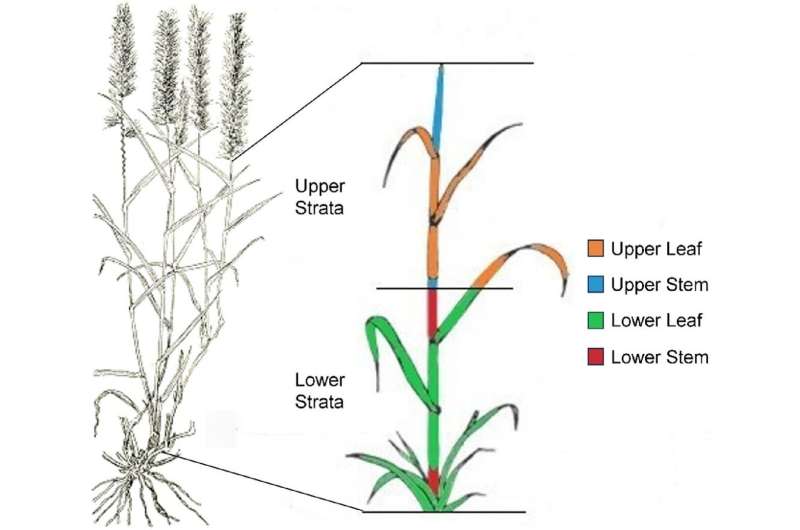This article has been reviewed according to Science X's editorial process and policies. Editors have highlighted the following attributes while ensuring the content's credibility:
fact-checked
trusted source
proofread
Fourier transform infra-red spectroscopy models unravel cell wall composition and nutritional quality in buffel grass

A research team developed Fourier transform infra-red (FTIR) spectroscopy-based partial least squares regression (PLSR) models to assess Cenchrus spp (buffel grass) accessions, discovering significant correlations between cell wall composition and digestibility metrics like neutral detergent fiber (NDF) and indigestible NDF (iNDF).
The successful application of these models in predicting tissue-specific traits and the impact of environmental conditions over different years highlights their potential for enhancing breeding strategies and agricultural practices. This approach promises to significantly improve the efficiency of selecting and breeding buffel grass with desirable agronomic traits.
Introduced to Australia in the early twentieth century, buffel grasses (Cenchrus ciliaris, Cenchrus pennisetiformis and Cenchrus setiger) are prized for their resilience to drought and salinity, and high biomass output, making them excellent for grazing and environmental rehabilitation.
However, their robustness also leads to ecological challenges, as they can become invasive in non-agricultural areas. Current research on buffel grass largely targets improving forage quality through studies on ruminal digestibility under varying environmental conditions. Traditional methods have limited these studies due to their capacity constraints.
A study published in Grass Research on 17 January 2024, uses chemometric regression models to analyze a diverse collection of Cenchrus accessions. It focuses on understanding the relationships between cell wall composition, digestibility, and plant structure to enhance grazing management and forage quality evaluation.
Utilizing FTIR spectroscopy alongside PLSR, this research developed models to assess cell wall components in buffel grass, achieving cross-validated R2 values above 0.80 and low RMSE, indicating robust predictive capability. These models successfully distinguished tissue types and strata levels in the grass, identifying specific cell wall compositions such as higher lignin and carbohydrates in the stem tissue compared to leaf tissue.
Differences were notable between 2019 and 2021 harvests, reflecting environmental impacts on plant biochemistry. Notably, NDF and iNDF values were consistently higher in stem tissues, particularly in the lower strata, aligning with the expected biomass composition.
The models also demonstrated significant year-to-year variations, suggesting environmental and methodological influences on plant traits.
According to the study's lead researcher, Christopher W. Brown, "This study successfully demonstrated a powerful tool that has been able to proficiently characterize the cell wall composition of buffel in different tissues and along its vertical canopy, providing greater insight into digestibility."
This study provides a fast, efficient way to analyze plant material, enhancing understanding of forage quality and supporting better pasture management decisions.
More information: Christopher W. Brown et al, Application of FTIR spectrometry for the assessment of cell wall composition and nutritional quality of Cenchrus spp accessions, Grass Research (2024). DOI: 10.48130/grares-0023-0029
Provided by Chinese Academy of Sciences




















